Sapa often feels like a world apart from the rest of Northern Vietnam. Perched in the mountains near the border of China, this quiet town is known for its cool weather, terraced rice fields, and small villages nestled in the hills. Mornings begin in the mist, and days unfold slowly, whether through treks across Muong Hoa Valley or afternoons spent in a quiet café watching clouds roll past.
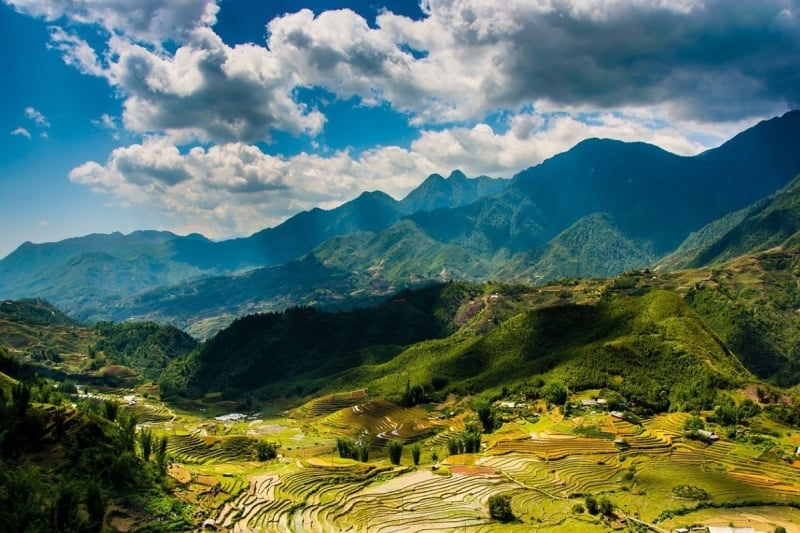
Image Credit: Vietnam Railways Official Website
For travellers heading to Hanoi or Halong Bay, Sapa makes a natural side trip. While it takes some effort to reach, the reward is a few days of calm, scenery, and connection with a very different side of Vietnam. This 3-day itinerary is designed for first-time visitors who want to explore Sapa at a comfortable pace, with a mix of gentle trekking, scenic spots, and time to simply take it all in.
Also read: A Guide to Sapa, Vietnam: Southeast Asia’s Very Own Switzerland
Day 1: Hanoi → Sapa + Fansipan Views & Town Wanderings
Arriving in Sapa
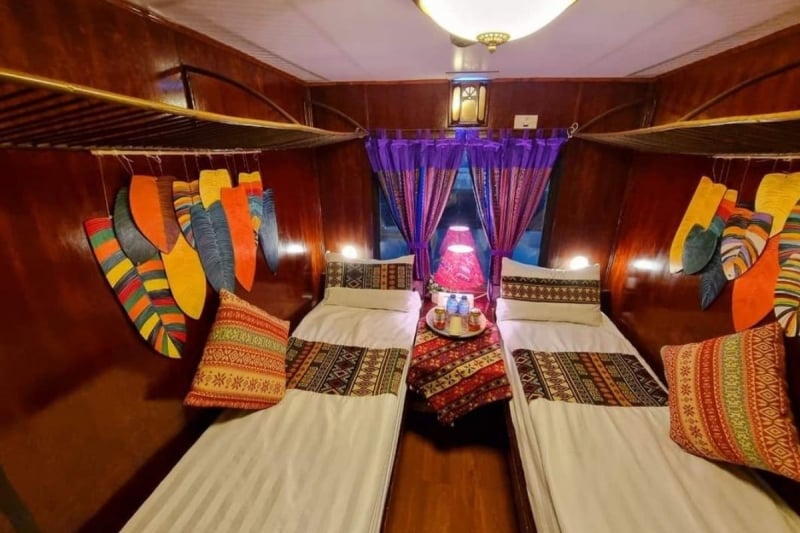
Image Credit: Vietnam Railways Official Website
Most travellers begin their journey to Sapa from Hanoi, either by overnight train to Lao Cai or by direct sleeper bus to Sapa town. The train takes about eight hours, followed by a one-hour minivan ride from Lao Cai through winding mountain roads. The bus is slightly faster and more direct, but either way, you’ll want to arrive early enough to make the most of the day.
Once in town, check into your accommodation or leave your bags at reception. Sapa is compact and walkable, with quiet side streets and valley views that ease you into the mountain pace.
Fansipan cable car experience
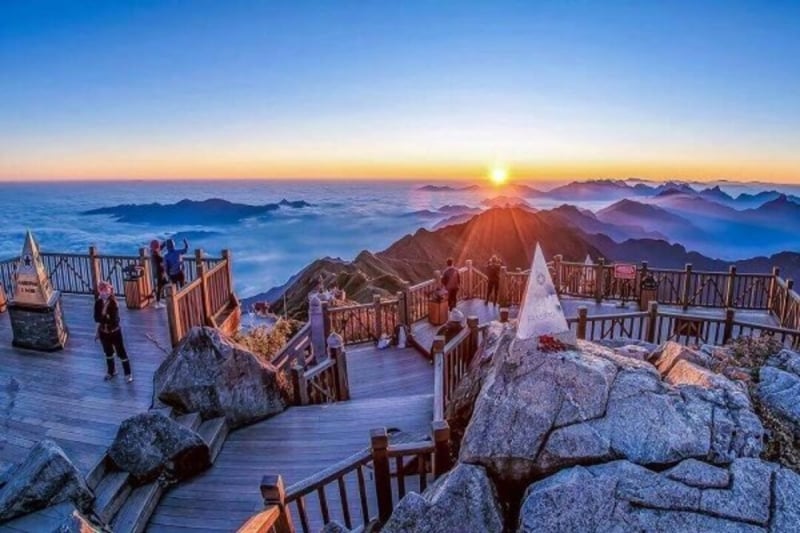
Image Credit: Sapa Tourism Official Website
Start the day with a visit to Fansipan, known as the “Roof of Indochina.” The journey begins at Sun Plaza, a landmark building in the middle of town. From there, a short funicular and cable car take you most of the way to the summit.
The ride passes over terraced hills and thick patches of cloud. At the top, the temperature drops noticeably. Shrines, statues, and temple-like structures dot the final stretch to the summit, which is reached by a steep staircase. On clear days, you’ll see the peaks stretching far into the distance. On misty mornings, the mountain seems to dissolve into the sky.
Exploring Sapa town
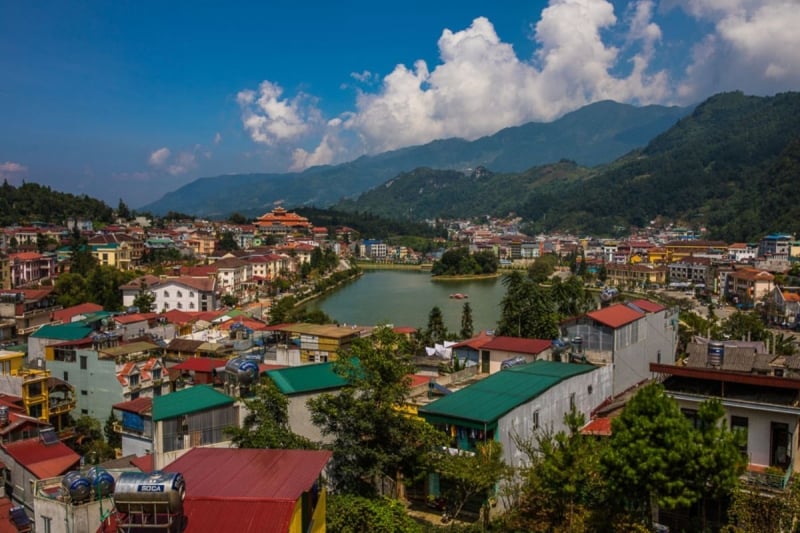
Image Credit: Vietnam Tourism Official Website
Back in town, spend the afternoon getting your bearings. You can start at the Stone Church, then walk a slow loop around Sapa Lake. The local market nearby sells textiles, souvenirs, and handicrafts, and is often busy with vendors from nearby villages.
For those who want a slower afternoon, there are plenty of cafés and rest stops throughout town. Whether you’re watching the clouds move across the valley or reading a book by the window, Sapa has a way of encouraging quiet moments.
A soft ending to the day
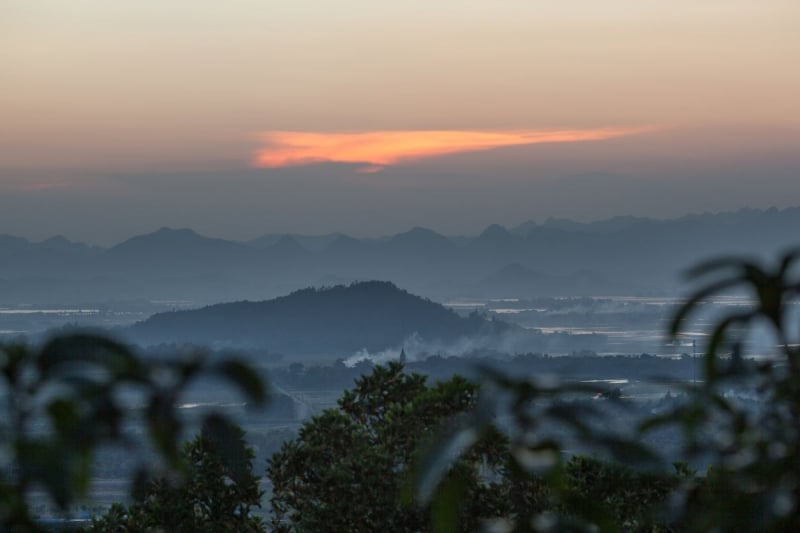
Image Credit: danr13 via Canva Pro
Evenings in Sapa are often cool and still. Some travellers choose to rest early after a long journey. Others take short walks through town as the streets begin to settle down. If you’re staying just outside the centre, this is a good time to enjoy the peace and views before heading into a full day of valley exploration tomorrow.
Also read: The Ultimate Guide to Train Travel in Vietnam for Singaporeans
Day 2: Sapa → Muong Hoa Valley + Village Trekking
Starting the day in the valley
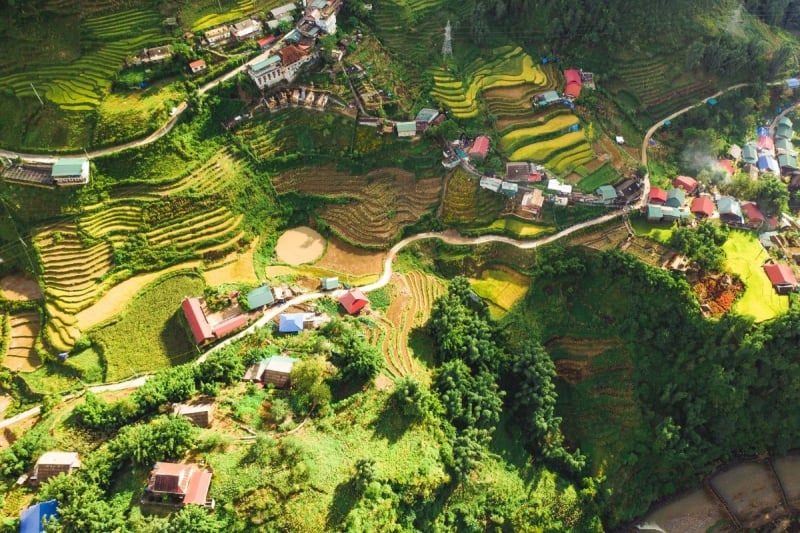
Image Credit: Krisztian Tabori | Unsplash
Sapa is best known for its rice terraces and quiet hillside villages, and the best way to experience them is on foot. You’ll want to start early to catch the soft morning light across the Muong Hoa Valley, one of the most scenic areas just outside town.
There are several trekking routes available, depending on how much time and energy you have. Many travellers begin from Lao Chai or Y Linh Ho, continuing on through Ta Van Village. These trails pass through rice fields, bamboo forests, and suspension bridges, with local homes and farmland scattered across the landscape.
Light or long: choosing your route
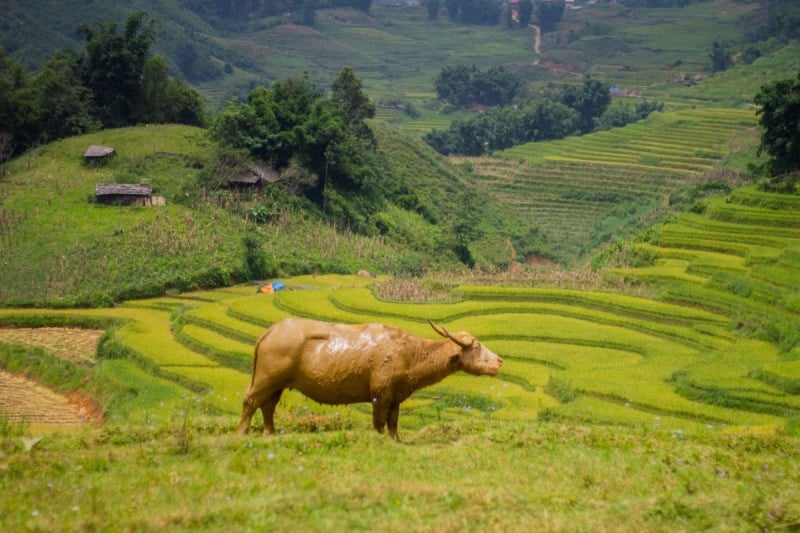
Image Credit: Kimia | Unsplash
Some routes can be completed in just a few hours. Others stretch into a full day of walking across connected villages like Giang Ta Chai or Ban Ho. It’s common to see water buffalo grazing near the path, or to pass small groups of children walking to school. Along the way, you might also be invited into a homestay or guided by local residents, many of whom speak basic English and share stories about their craft or community.
If you prefer to walk independently, it’s still helpful to let your accommodation know your route, especially in off-season months when trails can be slippery or less busy. For those who want more structure, local guides are easy to book through most hotels or agencies in town.
Taking in the landscape
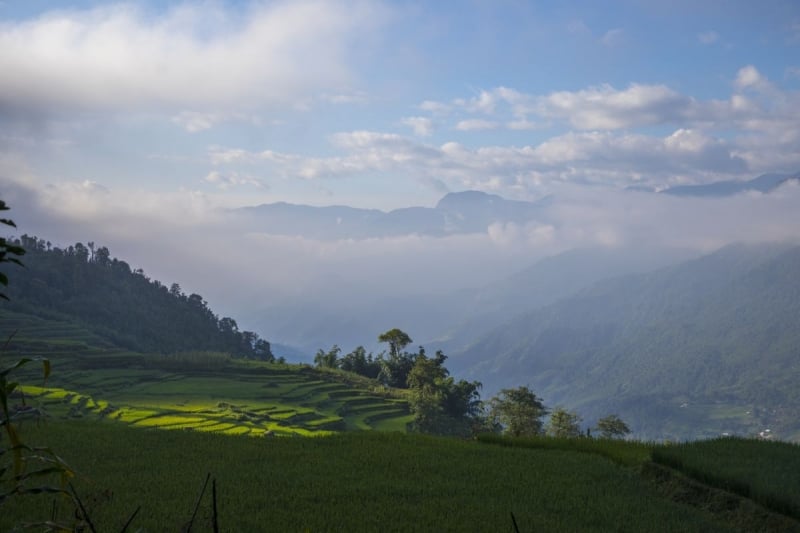
Image Credit: Abdelrahman Ismail | Unsplash
What sets the valley apart isn’t just the views, but the stillness. The layered terraces seem to fold into the mountains, each one shaped by hand over generations. Depending on the season, you’ll see golden rice fields ready for harvest or water-filled terraces reflecting the sky. Spring and autumn are especially scenic, with clear air and manageable temperatures throughout the day.
It’s not a difficult hike, but there are moments of uneven footing, mud, and uphill climbs. Good shoes, sun protection, and water are all worth having on hand.
Winding down
After the walk, many travellers head back to town by shared van or motorbike arranged in advance. Some trails loop naturally back toward the main road. By afternoon, most people return with tired legs and dust on their shoes, often surprised by how much ground they covered.
Even if you’re not usually a hiker, trekking in Sapa feels less like a challenge and more like a conversation with the landscape. Quiet, steady, and full of details that stay with you longer than you expect.
Also read: Where to Eat in Da Nang: 10 Must-Try Places for First-Time Visitors.
Day 3: Sapa → Hanoi + One Last Misty Morning
A quiet start
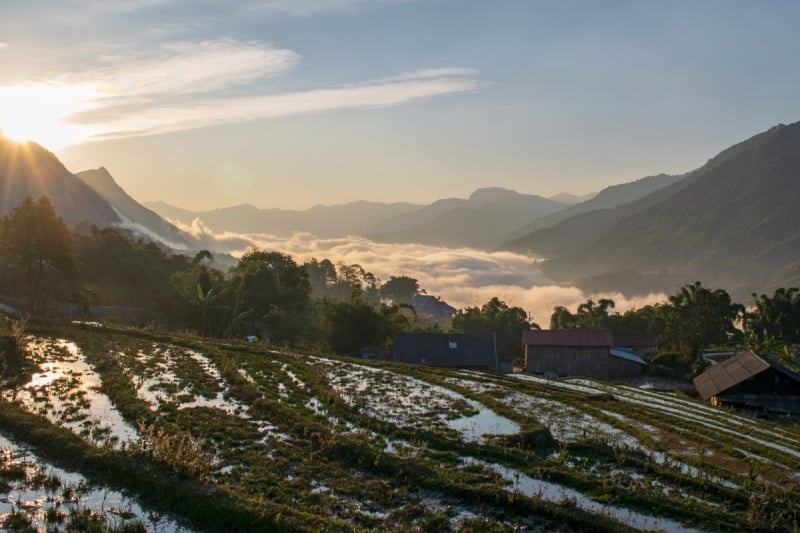
Image Credit: Ben Turnbull | Unsplash
If you’re leaving Sapa today, the morning tends to move slowly. Many travellers take this time to enjoy the last bit of mountain air before the long journey back to Hanoi. Whether you’re staying in town or on the edge of the valley, this is a good moment to look out over the terraces one more time. Depending on the season, you might catch a sunrise cutting through the mist or simply the stillness of early morning.
Optional final walks
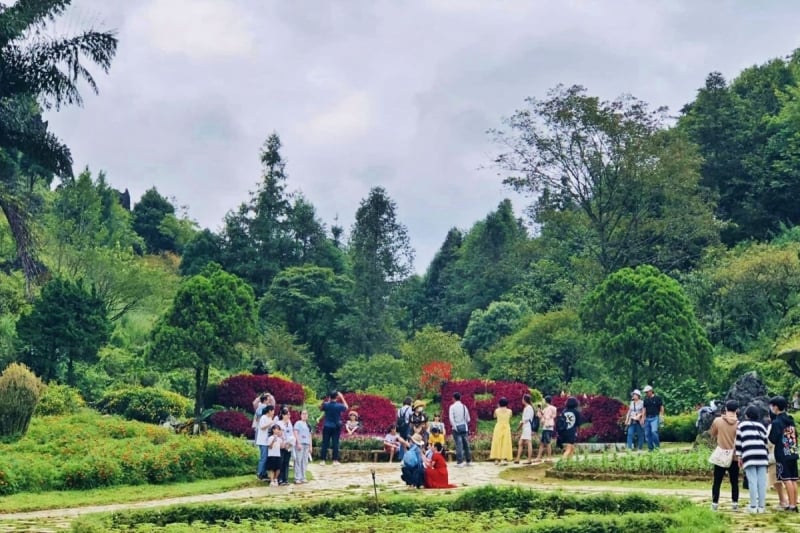
Image Credit: Sapa Tourism Official Website
If your departure is later in the day, you could fit in a short walk up Ham Rong Mountain, located just behind the Stone Church. The path winds through gardens and rock formations, with several viewpoints along the way. It’s not a strenuous hike, and on clear days, you’ll get a final panoramic view of Sapa town nestled in the hills.
Alternatively, some visitors spend this last stretch visiting a market, picking up embroidered keepsakes or small woven bags from local artisans.
Departing Sapa
Most travellers return to Hanoi either by sleeper train from Lao Cai or overnight bus directly from Sapa. The journey takes between six and eight hours, depending on your choice, and it’s best to book ahead if you’re travelling during peak seasons.

Image Credit: mehdi33300 via Canva Pro
Transfers from Sapa town to the train station or bus terminal are usually arranged through your hotel or tour provider. While the trip back can be long, many find it a quiet way to reflect on the days just passed, watching as the hills fade back into the distance.
How to Slot This Into Your Northern Vietnam Itinerary
Where Sapa fits
If you’re planning a one-week trip through Northern Vietnam, Sapa is best placed after Hanoi and before or after Halong Bay, depending on how you want to pace your travel. Many travellers do this loop:
Hanoi → Sapa → Hanoi → Halong Bay
or
Hanoi → Halong Bay → Hanoi → Sapa
You’ll need to account for travel time to and from Sapa, which usually includes at least one overnight journey. While this means you’ll spend more time on the road than in some other destinations, the change in scenery and atmosphere makes the detour worthwhile.
Also read: A 6D5N Itinerary of Northern Vietnam: Hanoi, Ha Long Bay, and Sa .Pa
Train or bus?
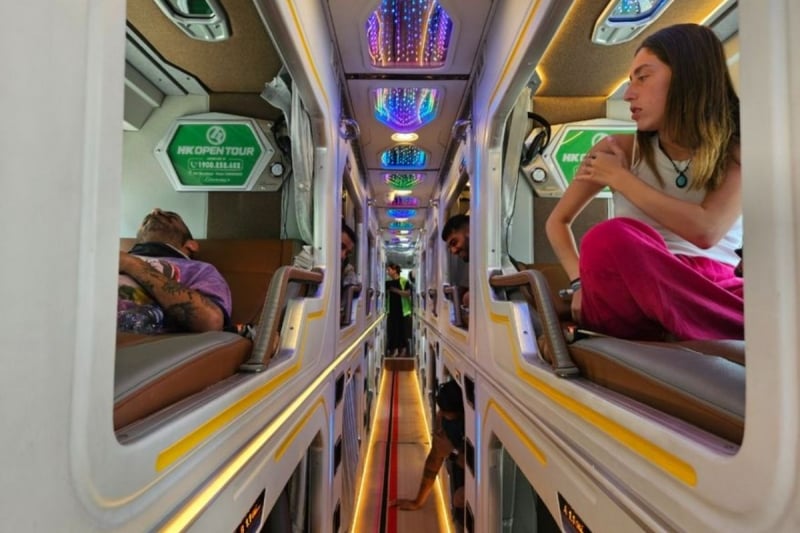
Image Credit: HK Buslines Official Website
-
Train: The overnight train from Hanoi to Lao Cai is slower but has a nostalgic feel. From Lao Cai, it’s another hour by van to Sapa.
-
Bus: Direct sleeper buses go from Hanoi to Sapa and back without transfer. They’re faster and more convenient, but can be bumpy, especially in rainy seasons.
Both options run daily and are easy to book through hotels or tour agencies.
Best time to visit

Image Credit: Võ Văn Tiến via Canva Pro
The most popular seasons are:
-
Autumn (September to November): Golden rice fields, cool dry weather, clear valley views.
-
Spring (March to May): Wildflowers in bloom, gentle weather, fewer crowds.
Avoid the colder winter months (especially December to February) if you’re not comfortable with chilly, foggy conditions.
What to pack
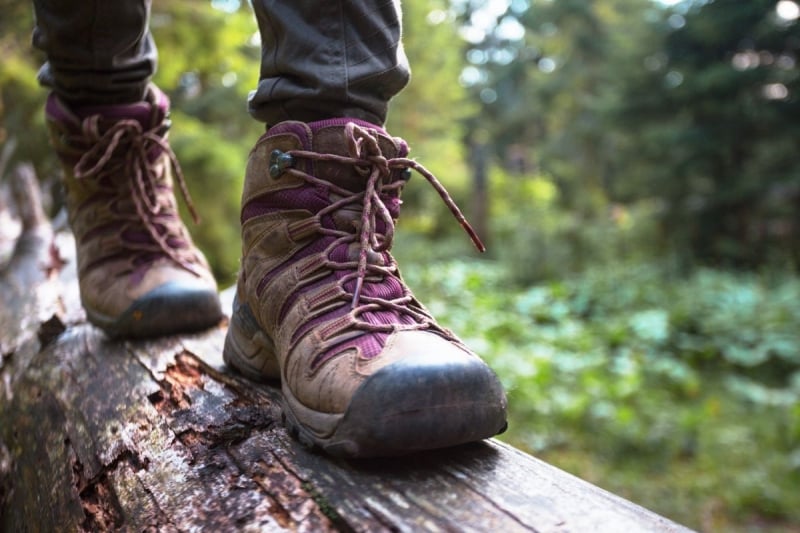
Image Credit: sergiimostovyi via Canva Pro
-
Good walking shoes (for trekking and uneven paths)
-
Layers (temperatures shift throughout the day)
-
Raincoat or windbreaker (even in warmer months)
-
Sunscreen and insect repellent
-
Cash (ATMs are available in town but not in smaller villages)
Also read: Best Things to Do in Vietnam with Family: A City-By-City Guide
Final Thoughts
Sapa might not be the first place that comes to mind when planning a trip to Vietnam, but for travellers looking to slow down and see a different side of the country, it’s one of the most rewarding detours you can take. The cool weather, quiet landscapes, and chance to walk through villages at your own pace offer a kind of reset that’s hard to find elsewhere.

Image Credit: Vivu Vietnam | Unsplash
For Singaporeans used to the buzz of city life or the heat of more typical beach getaways, Sapa offers something quieter and cooler (literally and figuratively). Whether you go for the views, the valley treks, or just to sit by a window and watch the clouds roll in, a few days here is often enough to leave with a different rhythm in your step.
If you’re already planning a trip to Hanoi or Halong Bay, consider adding Sapa to your route. It takes a bit more effort to get to, but you’ll have no regrets.




